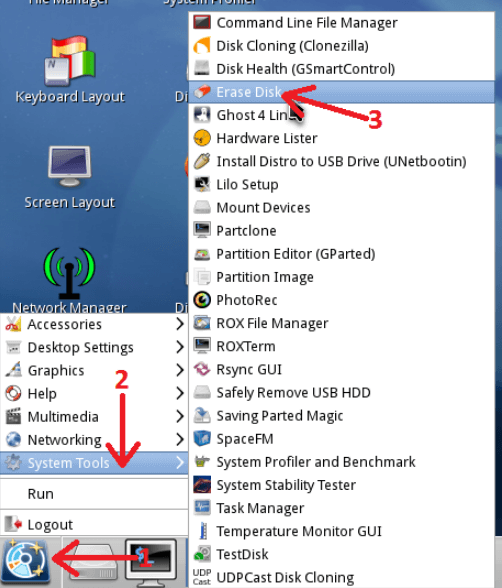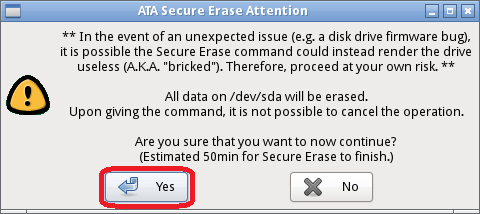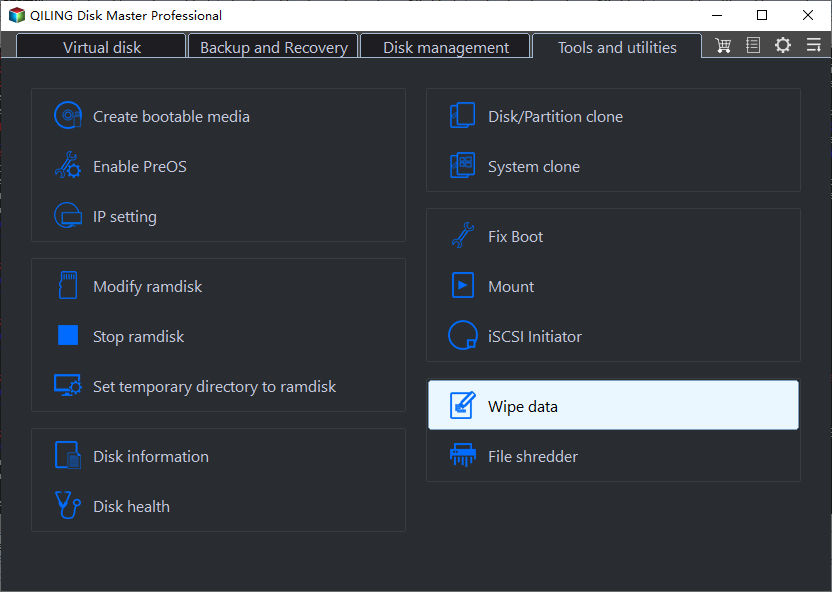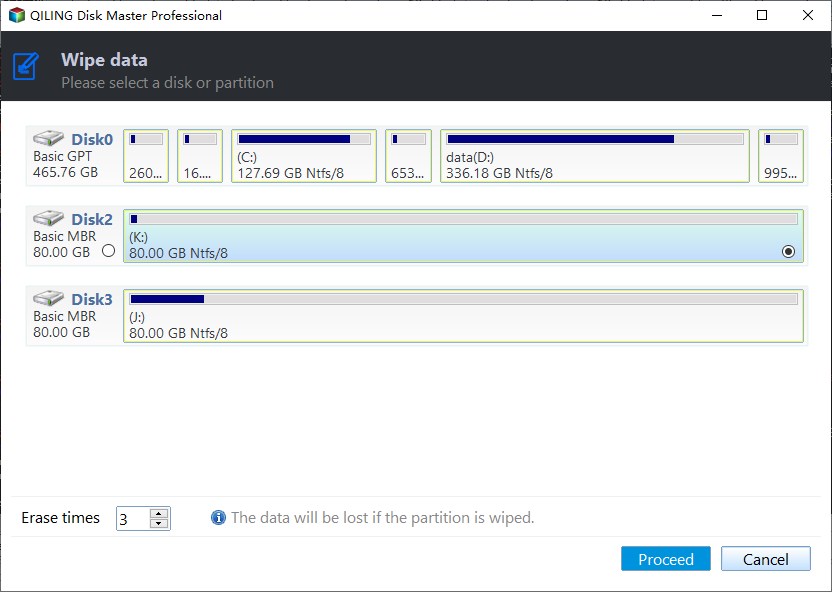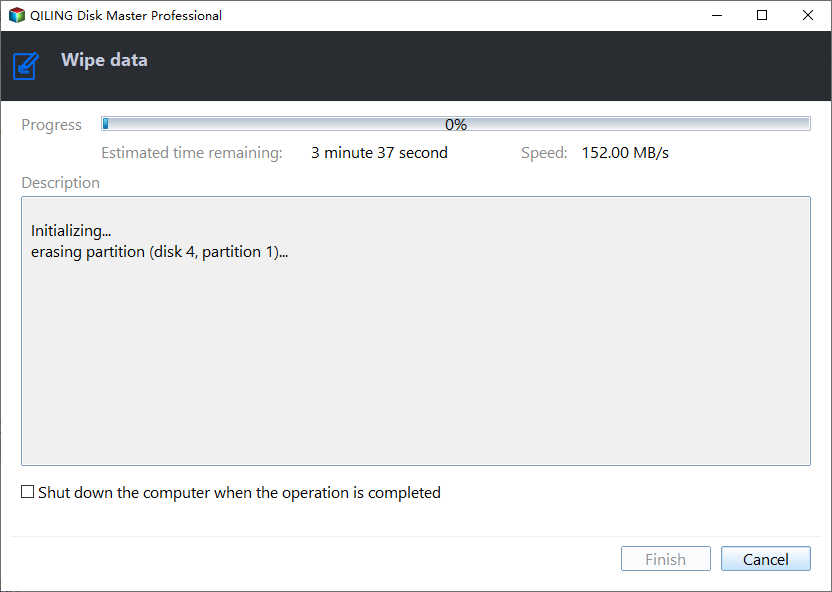2 Methods to Secure Erase SSD in Windows 10, 8, 7
When need to secure erase SSD?
Due to the huge difference in internal architecture between a solid-state drive (SSD) and a hard disk drive (HDD), the same method you used to wipe a hard drive cannot be used to erase an SSD. It is reported that regular SSD clean processes will actually leave data behind.
To wipe an SSD may degrade its lifespan and performance if not managed correctly since SSDs have a limited number of writes. To solve all these concerns, a method called Secure Erase was introduced. Secure erase SSD will effectively and securely wipe data from an SSD.
2 Ways to secure erase SSD drive in Windows PC
To securely erase SSD drive completely, there are two tools you can try. One is Parted Magic; another one is the Qiling Disk Master Professional. Look further to get more details about those 2 methods.
1. Parted Magic
Linux-based boot disc Parted Magic is often used to perform ATA Secure Erase for SSDs and HHDs. Secure Erase by Parted Magic will erase your SSD safely or invoke the built-in ATA Secure Erase routine. It supports NTFS, FAT, exFAT, ext3, and ext4, so you can use it under Windows and Linux systems. You can follow the steps below to securely erase an SSD:
Step 1. Download the Parted Magic image and then burn it to a USB disk or CD.
Step 2. Boot your computer from the Parted Magic media. When it is fully loaded, click on the lower-left hard drive icon, click “System Tools”, and then select “Erase Disk”.
Step 3. Click on the button "Internal: Secure Erase command writes zeroes to entire data area" and then click Continue.
Step 4. choose the SSD that you want to erase and then click the OK.
Step 5. If the drive's security state is set to freeze at boot time in BIOS/EFI, click on the Sleep button to put your computer to sleep. Then wake it up by pressing the power button and repeat Step 2 through Step 4.
Step 6. Leave the password as default, "NULL", and click OK.
Step 7. Then click “YES” to confirm the operation. If your SSD supports Enhanced Secure Erase, it will ask if you want to use it.
Never disconnect the power or interface cable to the drive before the process of Secure Erase SSD is complete. In this way, all data will be erased and it does not hurt your SSD.
2. Qiling Disk Master Professional
Apart from using the Parted Magic, you can also try the Qiling Disk Master Professional. It is a powerful and reliable disk partition management tool that provides “SSD Secure Erase” feature. You can use it to securely erase any SSDs within Windows 7. If you are using Windows 10 or Windows 8, you need to unplug your SSD and connect it to another computer running Windows 7.
1. Connect your SSD via SATA port to a Windows 7 computer. To ensure the erase process goes smooth, you cannot connect it via USB port. You can download the demo version and have a try.
2. Open Qiling Disk Master, click “Tool and utilities” tab page, and choose “Wipe Data”.
3. Select the SSD that you want to Erase.
4. Check the SSD identification information in case of wiping the wrong SSD.
5. In the next screen, you are likely to see the SSD is in Frozen state and it cannot be unlocked. In that case, you can unplug the SATA cable and plug it.
6. After reconnecting your SSD, click Proceed to start the SSD Secure Erase. And wait for the process to complete.
Almost instantly, the Secure Erase process is complete and you will see the SSD shown as a block of unallocated space. Secure Erase can completely wipe all the data clean from your SSD and all the data are not recoverable.
Summary
So, to secure erase SSD drive in Windows 10, 8, 7, you can use Parted Magic or Qiling Disk Master Professional. The latter is specially designed for Windows PC users, allowing you to clone SSD/HDD, clone partition, convert disk between MBR and GPT without deleting partitions, migrate OS to SSD, extend system partition, and more
Related Articles
- Free Up Your Disk Space on Windows 7 – 7 Useful Tips
This article shares 7 tips to free up your full disk space in Windows 7 and presents a tutorial on wiping your disk space for reuse. - Secure Erase SSD on Windows 11: Simple, Unrecoverable
In this essay, you are able to master the most secure way to erase an SSD so that it can never be recovered. Read on to learn more detailed information and steps. - 8 Best Windows File Shredder Software for Windows 11, 10, 8, 7
Do you need software that helps you completely get rid of those confidential data and prevent any form of privacy file leakage? This article provides you with the eight best windows file shredder software that helps you get the task done. - 5 Best Free Drive Wiper Tools Are Here, Feel Free to Download
Are you going to sell off your PC? Make sure to delete all your files before selling. The data can still be recovered by data recovery software. So what's the solution? It is. Read here the 5 best free drive wiper software with a step-by-step guide to wipe confidential data permanently from your hard drives and SSDs.
